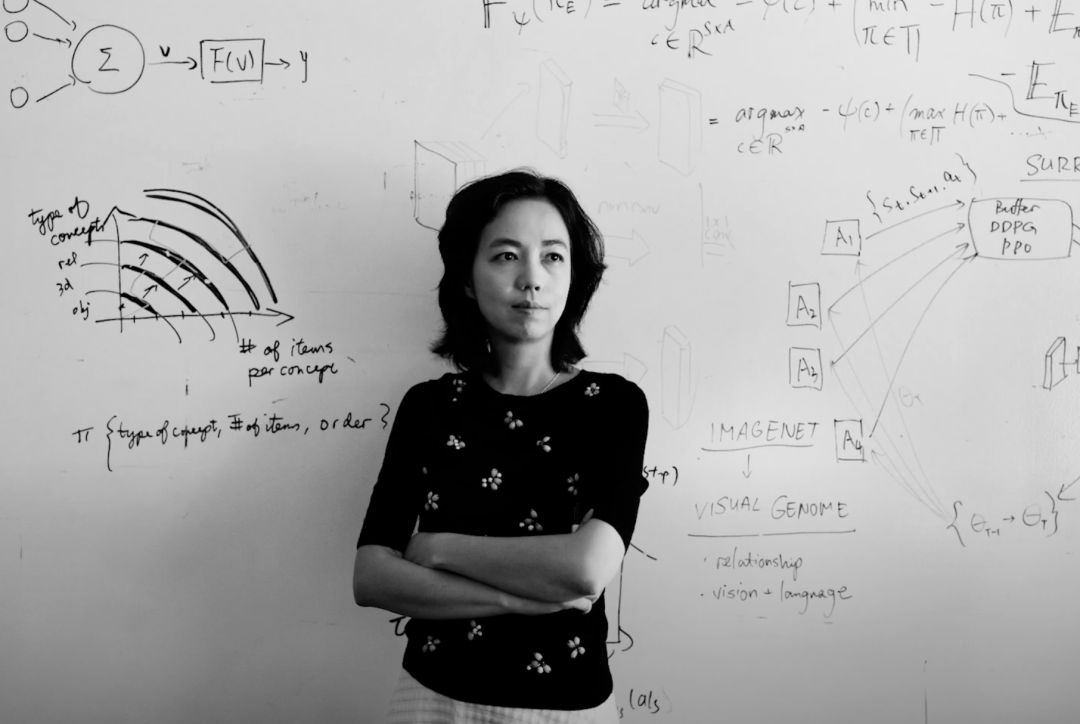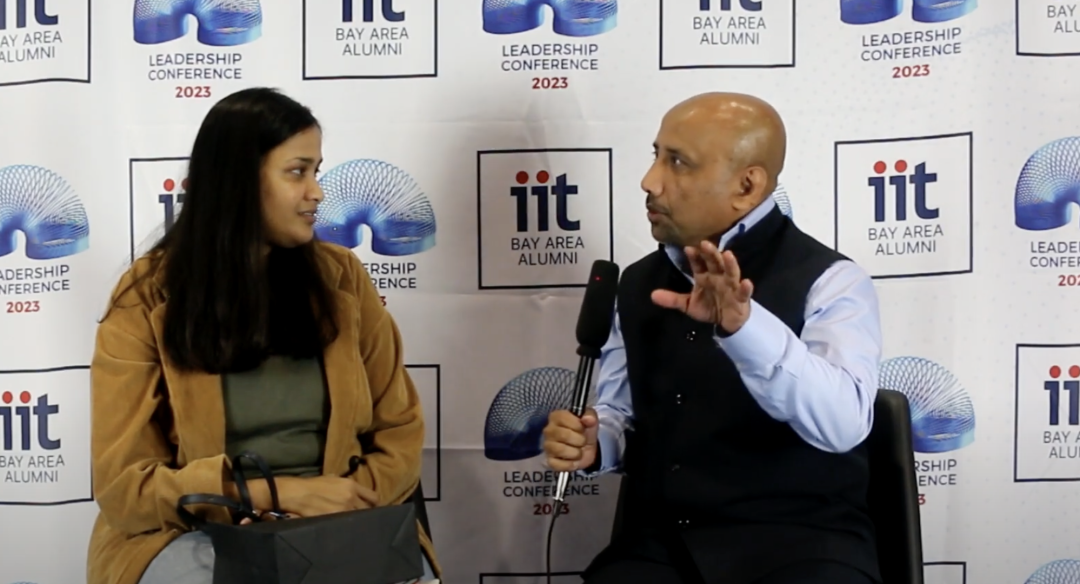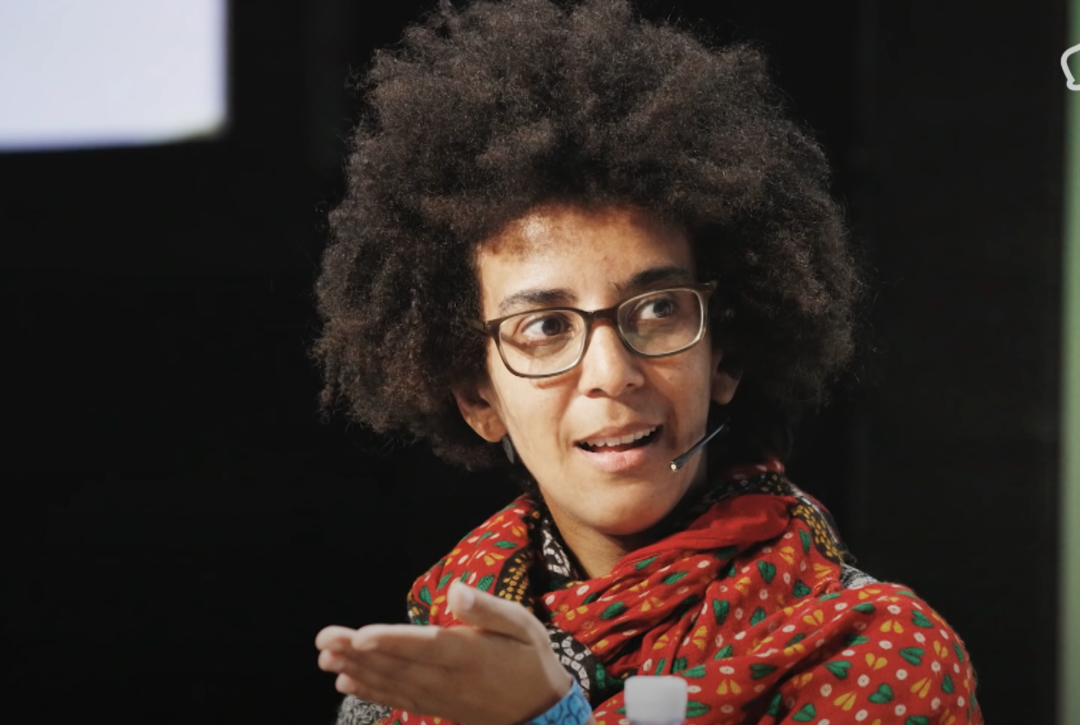Article Source: Geek Park
Author: Li Yuan
Editor: Zheng Xuan

Image Source: Generated by Unbounded AI
If, like me, you default to assuming that when you see the term "Transformer octet," they are all male, today is a good time to re-examine your bias. Unfortunately, media resources in this world are not always evenly distributed according to importance. Similarly, in advancing the forefront of technology, in the public's awareness, the leader of DeepMind, which developed AlphaGo that defeated human Go players and AlphaFold, which may bring immense benefits to humanity, Demis Hassabis, is not as famous as Sam Altman, the leader of OpenAI, who staged a palace drama. And even the two of them combined may not be as famous as Musk, who has tried to invest in their two failed companies. Musk is undoubtedly outstanding. However, the media attention he receives far exceeds that of equally outstanding individuals, and news related to him, even if not very important, often makes headlines. Before Musk took over Twitter, I really don't remember seeing frequent mentions of "Twitter might add a small feature!" in tech news. And it's just a possibility! Musk dares to do and say. For every internet-famous entrepreneur like Musk, there are ten low-key promoters like Demis Hassabis, who are only respected in the industry but not well-known to the public. And when it comes to women, this situation is often even more serious. Female tech workers often carry a double debuff. On the one hand, female tech workers tend to be low-key, and on the other hand, women face structural disadvantages from society. When doing the same thing, women's scientific achievements are often overlooked and attributed to their male colleagues working alongside them—this phenomenon has long been discovered and named the Matilda Effect. For example, when it comes to programming and artificial intelligence, how many people can immediately realize that the earliest computer program in human history was written by Ada Lovelace, a woman, and the first AI textbook came from Elaine Rich, also a woman? How many people who have long been focused on the AI field can readily name several outstanding women in the AI field? It's okay. Before doing this topic, I couldn't immediately name many outstanding women like this, but that doesn't mean there are no outstanding female tech workers working in the AI industry. This is the significance of International Women's Day. On March 8th, let's take a few minutes to learn about five outstanding female AI researchers and entrepreneurs.
01 Li Feifei, creator of ImageNet, triggered the explosion of image AI
The explosion in the field of AI has a coherent history in academia, and in the industry, it can almost be traced back to a moment: in 2012, the deep learning network AlexNet achieved a high success rate in image recognition. Artificial intelligence gradually entered the era dominated by deep learning, and within ten years, artificial intelligence also became a hot topic in our daily lives. And the proposal of AlexNet can ultimately be traced back to ImageNet established by Li Feifei in 2009. Li Feifei was born in Beijing in 1976 and grew up in Chengdu. At the age of 12, she moved to the United States. At that time, she could hardly speak English, but within two years, she quickly reached a high level of English proficiency while demonstrating strong mathematical abilities. In 1995, she entered Princeton University on a scholarship, and at that time, she almost went home every weekend to help her family manage the dry-cleaning store they had borrowed money to open. In 2007, Li Feifei became an assistant professor at Princeton University. At that time, researchers in the field of computer vision typically needed to write a set of algorithms specifically to identify dogs and then write another set of algorithms to identify cats. Li Feifei's intuition was that the model's capability might be sufficient, and the problem lay in the data.

Li Feifei | Image Source: Youtube Channel National Geographic Society
She wanted to create a huge database and label every possible object in each image. At that time, such a project was almost ignored. She first had Princeton students work part-time to build ImageNet, but progress was slow. Later, she used crowdsourcing platforms to have part-time workers from around the world collectively annotate the data. "Online workers, their goal is to make money in the simplest way, right?" she said in an interview with Wired. How can you prevent them from randomly clicking through if you ask them to select a panda from 100 images? Therefore, she embedded and tracked some images, such as photos of golden retrievers that had already been correctly identified as dogs, as a control group. The ImageNet project she initiated initially collected 3.2 million images, which later increased to 15 million. It is on such a database that researchers have the opportunity to compare whose algorithm is more powerful. And in 2012, AlexNet rose to fame in the ImageNet Challenge. It can be said that ImageNet paved the way for the advancement of deep learning, and fields such as autonomous driving, facial recognition, and object recognition all started from ImageNet. Even today, when people mention a breakthrough in a certain field of artificial intelligence, they often use "Is this its ImageNet moment?" to describe it. In recent years, in addition to continuing to advance research, Li Feifei has also been focusing on increasing the diversity and inclusiveness of artificial intelligence, advocating for resources for the academic community so that it does not lag behind the industry. In 2023, her book "My World: Curiosity, Exploration, and Discovery at the Dawn of the AI Era" was published, in which she tells her firsthand scientific stories and her interpretation of the major historical moments of AI in this century.
02 Niki Parmar, Transformer One of the eight authors of the architecture
The wave of large models came into the public eye, perhaps after the appearance of ChatGPT, but there is no doubt that the origin of the wave of large models came from the paper "Attention is All You Need" written by eight engineers from Google in 2017. This paper proposed the groundbreaking Transformer architecture, and the leading AI companies we see today, including OpenAI's ChatGPT, are almost all built on the foundation of the Transformer architecture. I don't know about the readers, but I did indeed once be misled by the media's "Transformer octet" and thought that all the authors were male. That's not the case. Niki Parmar, the third author of Transformer, is a female researcher.

Niki Parmar Interview | Image Source: YouTube Channel IIT Bayarea
Niki Parmar is from India and studied at the Puna Institute of Computer Technology in India for her undergraduate degree. She only came to the University of Southern California in 2013 to pursue a master's degree in computer science. Niki became interested in machine learning during her undergraduate years: "I took MOOCs on ML and AI offered by Andrew Ng and Peter Norvig, and I was curious about the combination of data, pattern matching, and optimization," she said in an interview. After graduating in 2015, she joined Google's research organization, where she became interested in pure research. In 2017, she became one of the core authors of the Transformer. Regarding research, she said, "At first, the abundance of information and research around me constantly overwhelmed me. Focusing on a specific problem and exploring it with peers can help you ask the right questions." Niki Parmar, along with Ashish Vaswani, who is also of Indian descent and a co-author of the Transformer paper, co-founded two companies, Adept AI and Essential AI. She currently manages the latter company. Essential AI received a new round of financing of $56.5 million from tech giants AMD, Google, and Nvidia at the end of last year, while Adept AI previously received $350 million in financing.
03Daniela Amodei, Co-founder of the world's second-largest model company Anthropic
A few days ago, Anthropic's model claimed to surpass the capabilities of OpenAI's GPT-4, causing quite a stir. Reports about Anthropic often mention that it was formed by seven researchers who resigned from OpenAI, or that Anthropic's CEO comes from OpenAI, inadvertently downplaying Daniela Amodei, the president of Anthropic and one of its two co-founders. In fact, Anthropic was co-founded by Daniela Amodei and Dario Amodei, who are siblings. The new large model released by Anthropic was mainly presented by Daniela in many television interviews. In promoting Anthropic, it is often mentioned that it is more focused on "aligning artificial intelligence systems with human values" than OpenAI, and Daniela Amodei was the former Vice President of Safety and Policy at OpenAI. Daniela is of Italian descent and grew up in San Francisco. Her work experience is relatively diverse. During college, she obtained bachelor's degrees in English literature, politics, and music literature. Her previous work was mainly in the political and non-governmental organization fields, where she developed strong management skills. In 2013, she joined Stripe, which had just been founded in 2010. At that time, Stripe was still a small company, but its valuation has now reached $50 billion, and at its peak, it was valued at more than SpaceX. Starting from Stripe, she began to apply her management and risk control skills to technology companies. At Stripe, she was responsible for team recruitment and one of the most important aspects of payment companies—risk management. She led three teams of 26 people, analyzing over 7,000 potential fraud, credit, and policy violation cases, achieving a 72% reduction in loss rates from the peak, reaching the lowest level in the company's history. In 2018, she once again demonstrated her strong strategic vision by joining OpenAI, directly leading two technical teams: OpenAI's natural language processing and music generation teams, and also managing the technical security team. In addition to these roles, she served as Vice President of Human Resources, overseeing recruitment, human resources planning, DEI, learning and development, and incubating new business operations teams, making her a true all-rounder. In 2021, she co-founded Anthropic with Dario Amodei.
04Mira Murati, OpenAICTO
Although OpenAI is world-renowned, many people may not know that the current CTO of OpenAI is a woman, Mira Murati. Mira Murati joined OpenAI in 2018, was promoted to Senior Vice President responsible for research, products, and partnerships in 2020, and was promoted to Chief Technology Officer in 2022, participating in several projects including ChatGPT, DALL-E, and GPT-4. During the power struggle at OpenAI, she was briefly nominated as the new CEO of OpenAI. Mira Murati was born in Albania in 1988 and attended high school in Canada. Her background is in engineering, and during her engineering studies at Dartmouth College, she directly built a hybrid race car for a school project. After briefly working in the aerospace field, Mira joined Tesla as a Senior Product Manager for Model X, deepening her interest in artificial intelligence through Autopilot. Her interest in research is evident, as she once mentioned in an interview, "Boredom is a powerful driving force for pursuing and exploring the forefront of anything."
05Timnit Gebru, Toppled Google's AI Ethics Team
Recently, Google withdrew its model from the literature due to AI ethics issues, which reminded me of the drama surrounding Google's AI ethics team in 2020. In 2020, a Google AI ethics researcher, Timnit Gebru, publicly stated that she was fired. The reason for her dismissal?—It was her criticism of bias in large language models. ```

Timnit Gebru | Image Source: YouTube Channel Vice News
Timnit Gebru was born in Eritrea and Ethiopia in 1983. In 2014, she obtained a Ph.D. in Electrical Engineering from Stanford University, specializing in computer vision and machine learning. After graduating, she has been dedicated to researching issues related to fairness, accountability, transparency, and ethics in artificial intelligence. She is known for a groundbreaking collaborative paper that demonstrated the inaccuracy of facial recognition in identifying women and people of color, which could lead to discrimination when using such AI technology. Her research ultimately led to a change in policy at Amazon. In 2020, Gebru co-authored a paper with another researcher criticizing large language models and their environmental impact. The paper also expressed concerns about the lack of diversity and ethical considerations in the development of AI technology.
The article was supposed to be published the following year, but Jeff Dean, the head of Google AI, told colleagues in an internal email (which he later made public) that the paper "did not meet our publication standards." When Gebru tried to argue with the company, she found her company email cut off while she was on vacation. This caused a sensation at the time, with many prominent researchers, civil rights leaders, and Gebru's colleagues at Google AI publicly defending her on Twitter. A petition in support of her received over 1,500 signatures from Google employees, over 2,000 scholars, nonprofit leaders, and industry peers.
However, in the end, Timnit Gebru still left Google. After leaving, she announced the establishment of an independent AI research institute called "Distributed AI Research" (DAIR), which aims to counter the widespread influence of large tech companies in AI research, development, and deployment. As a true warrior, she once said, "I can't wait for the big tech companies to finally address the problems caused by AI."
06Conclusion
The basic fact is this: even with so many outstanding women, the tech and AI industries are still male-dominated. To change this, there are too many factors involved: the pressure women face in academia, the unequal treatment they receive in the investment world, and even the guarantee of support for women's STEM education and workplace measures from an early age.
One article cannot solve these problems. This is also the reason why International Women's Day and many motivational programs for women still exist. In fact, the last woman in the article, Timnit Gebru, was the first female researcher and a disciple of Fei-Fei Li. Sometimes it can be a beautiful cycle.
At the same time, on this special day, we can still draw strength from these inspiring women. In an age where media resources are still too scarce for them, take a moment on this day to remember them. Give credit when it's due.
免责声明:本文章仅代表作者个人观点,不代表本平台的立场和观点。本文章仅供信息分享,不构成对任何人的任何投资建议。用户与作者之间的任何争议,与本平台无关。如网页中刊载的文章或图片涉及侵权,请提供相关的权利证明和身份证明发送邮件到support@aicoin.com,本平台相关工作人员将会进行核查。




